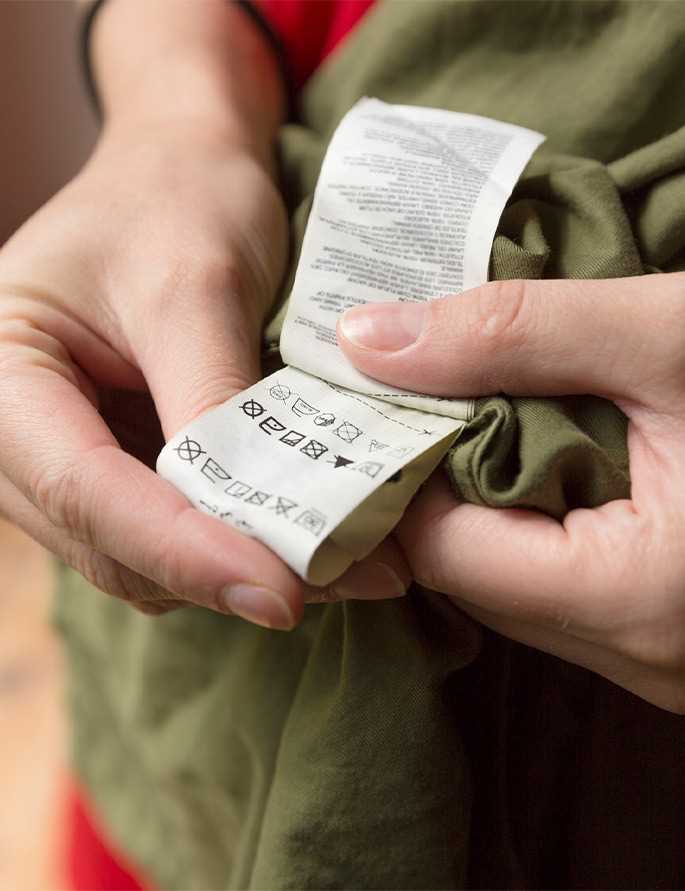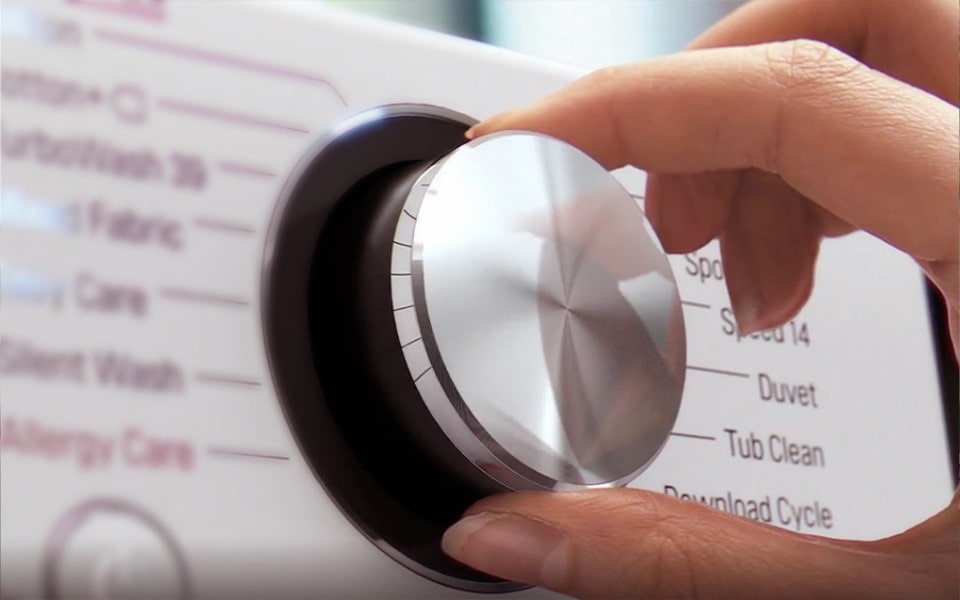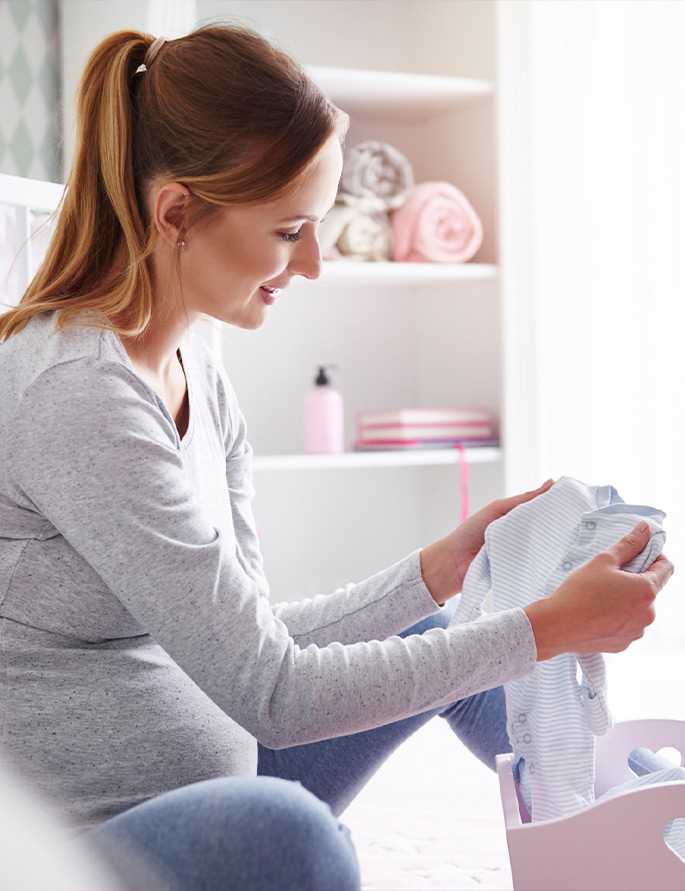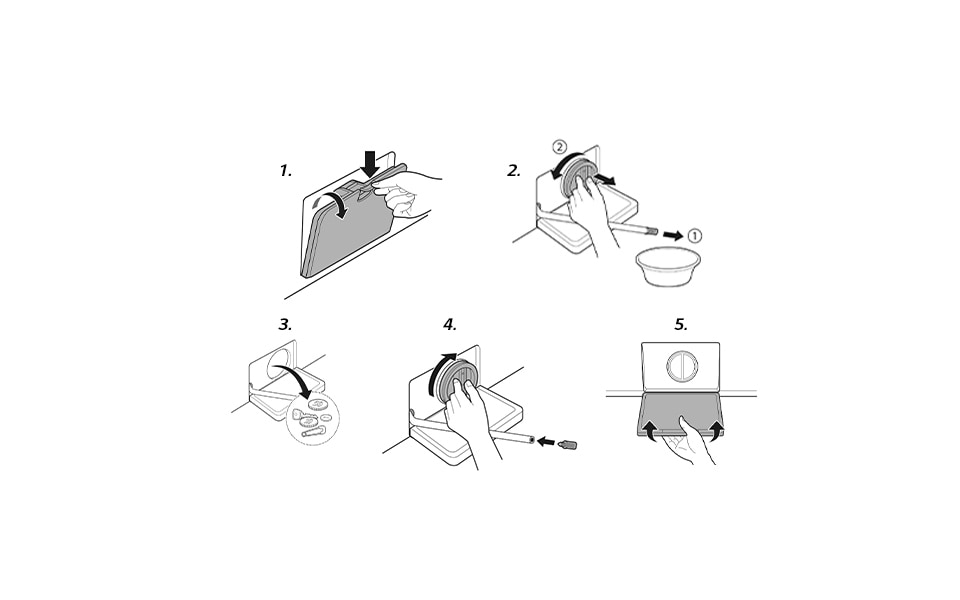We use cookies, including cookies from third parties, to enhance your user experience and the effectiveness of our marketing activities. These cookies are performance, analytics and advertising cookies, please see our Privacy and Cookie policy for further information. If you agree to all of our cookies select “Accept all” or select “Cookie Settings” to see which cookies we use and choose which ones you would like to accept.
‘How do I choose the right wash cycle?’
By Rachel Ramsay

Did you know that the way you wash your clothes can make a big difference to how much life you get out of them? The secret to caring for your clothes is understanding your washing machine. Today, we’re sharing the answers to some commonly asked questions, from choosing the right wash cycles to how to keep your washing machine clean.
Q. What cycle setting best suits my laundry?
A. Your first port of call for information on how to clean your clothes is the care labels you’ll find inside them. These have symbols showing what wash types are suitable for them, and you then need to match these up with the correct cycle on your washing machine.
Having checked the care labels in your clothes, you may still be confused by all the different settings on your washing machine. Let’s take a look at some of the most common wash programmes to give you a better idea of which one will best suit your laundry.
Cotton
This is designed for normally soiled cotton clothes, and combines various drum motions to give cotton fabrics the best clean.
If you’re still not sure which wash cycle to choose, opt for Mixed Fabric or Easy Care, as these cover the majority of common fabric types and are ideal for a varied load of laundry. Remember, for Cotton, Mixed Fabric and Easy Care cycles, LG washing machines with AI DD™ function will detect the type of the clothes and intelligently adjust the wash pattern for an optimal clean.
Depending on the LG washing machine model, you may also notice there’s a button called ‘Download Cycle’. You can use this cycle in conjunction with the LG ThinQ® app, which lets you download new cycles for different kinds of laundry. There are cycles for every type of wash you could possibly need, such as Baby Care, Cold Wash, Colour Protection, Deodorisation, Jeans, Juice and Food Stains, Kids Wear, Lingerie, Rainy Season, Refresh, Single Garment, Sleeve Herms and Collars, Sportswear, Sweat Stain, Swimwear and more.
By default, this button allows you to run the Rinse+ Spin wash. If you need to wash your clothes by hand, just pop your clothes in the washing machine after handwashing and run this mode to rinse and drain the water from them, so they’re easy to hang and dry.
Q. What wash temperature and spin speed are right for my laundry?
A. The place to look for information on wash temperature is once again the clothes care label, but you won’t normally need to think about either the water temperature or the spin speed, as you’ll find that your washing machine has a default setting for the wash cycle you’ve chosen.
Q. How can I reduce the environmental impact of my laundry?
A. To make sure you’re washing your clothes not only with the right wash cycle, but also as sustainably as possible, here are a few useful tips to keep in mind.
- Skip the prewash for lightly and normally soiled laundry, as this helps protect the environment by saving energy, detergent and water.
- Pretreat stains – heating water uses energy, so if you can, pretreat any stains in your laundry so that you can use a lower temperature for your wash.
- Use detergent correctly – follow the manufacturer’s instructions to make sure you’re using the right amount for each wash.
Q. Which detergent is best, and should I use fabric softener?
A. Now that you’ve chosen the wash cycle, temperature and spin speed, it’s time to put in the detergent. There are so many laundry detergents out there, and some are better suited to certain types of fabric. For example, you can get detergent specifically for wool, or colour-safe detergent that stops colour running from your clothes. It’s always a good idea to follow the instructions on the bottle to help you decide which one to choose and how much to use.
If you’re washing at temperatures below 60 degrees, it’s best to use a liquid detergent, as washing powder may not be fully dissolved in a cooler wash, leaving residue in your clothes. If you’re running a wash cycle at 60 degrees or more, the best option is a washing powder, as hot water can cause liquid detergent to evaporate.
Q. How can I clean my washing machine?
A. Another way to make sure your clothes get the best possible clean is to make sure your washing machine itself is clean. Here are some tips for cleaning your washing machine and keeping mildew and bad smells at bay.
- Empty your washing machine as soon as the cycle finishes – don’t leave wet clothes in your washing machine, as this can cause wrinkling, colour transfer and bad smells.
- Wipe the door and door seal with a dry cloth after every wash – and leave the door and dispenser drawer slightly open to let them dry.
- Run the ‘Tub Clean’ cycle regularly if you have this on your LG washing machine. This special function washes and rinses the inside of the drum. If you don’t have this cycle, you could run your washing machine empty on the Cotton cycle setting, with the water temperature at 95 degrees and wash tablets in the drum and dispenser drawer.
- Clean the dispenser drawer - detergent and fabric softener residue can build up in it, resulting in mildew and bad smells, so remove the drawer and inserts once or twice a month and rinse them with warm water, dry them with a soft towel.
- Clean the drain pump filter - you’ll find this small, rectangular box on the bottom left corner of your machine, and it’s there to collect small objects and microthreads during a wash. Once a month, follow the instructions in your manual to check the filter and remove anything that’s collected in it.1
Caring for both your clothes and your washing machine is easy when you know how. We hope this article has given you some useful tips.
















